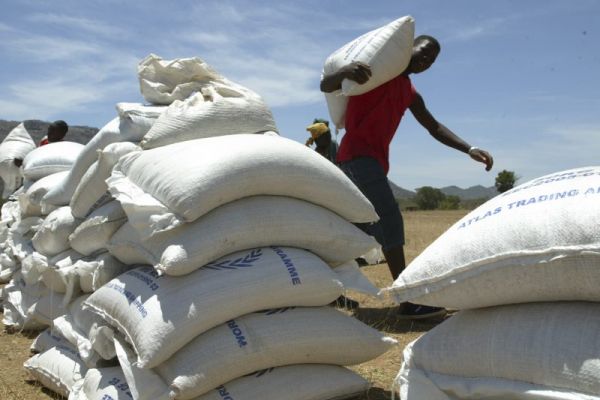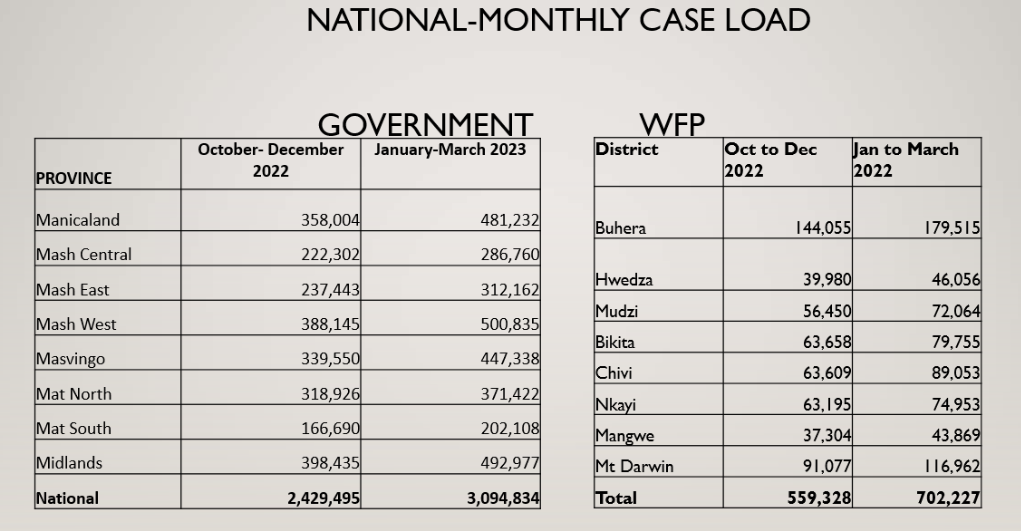Govt to resume food distribution in October amid reports last handouts were in March

The government says it will resume distributing food aid in October, amid reports that some desperate communities in Matabeleland South last received aid in March.
According to the 2022 Zimbabwe Vulnerability Assessment Committee (ZimVAC) report, 3.8 million in Zimbabwe need food assistance with provinces such as Matabeleland North experiencing ‘grinding’ poverty worsened by the adverse economic impacts.
“With effect from 1st October (2022), we are going to distribute food to more than two million families. This programme will roll up to the end of December. From January to March (2023), we are going to distribute food to 3.8 million households and it will be on full scale,” said the deputy minister of Public Service, Labour and Social Welfare, Lovemore Matuke.
Matuke said the government had about 15 000 metric tonnes of maize, which is already available and would distribute that before October.
“However, we have targeted areas with severe drought. The 15 000 metric tonnes are not for the whole country. As we go to October, we are going to increase our numbers to more than two million, then 3.8 million from January up to March,” he said.
Matuke’s sentiments come after Beitbridge Senator Tambudzani Mohadi, who told the Senate that there were vulnerable groups who were supposed to receive assistance throughout the year but last received food supplies in March.
“We have vulnerable groups within our communities, that is, the elderly, orphans and the disabled. These people are supposed to get food throughout the year, especially in areas in Region 5. The information that we have is that these people last received food assistance in March. Up to now, they have not received any food. What is the Government policy on that issue?” she asked.
The senator quizzed if the government starts distributing food in October, whose responsibility it had been to take care of the vulnerable who had last received food in March.
In response, Matuke said if there were specific areas, his office must be advised to see how best to distribute the maize to the areas in need.
“Yes, we know we had a few problems with quite a number of areas from our different provinces. I am not going to speak as of March but I will start now. We could not provide enough as you indicated but basing on the ZIMVAC report, they listed some areas which were almost 80 percent short of grain. Those areas, which were not indicated by ZIMVAC, we could not supply food because most of the areas could provide food for themselves up to October,” Matuke said.
“I agree with you that there are some areas, which were omitted by error and those are the areas which I am requesting you to forward to our office. Currently, we have 15 000 metric tonnes and we could then allocate something to those areas in need.”
Matuke claimed the government had “never stopped food distribution” but were targeting areas, which were in dire need of the grain.
Meanwhile, at a Food Deficit Mitigation Strategy Sensitisation Meeting held in Bulawayo at the start of September, Tawanda Zimhunga, Director of Social Development in the Ministry of Public Service, Labour and Social Welfare, said the government and the World Food Programme (WFP) would implement a joint food assistance programme across the country to give food to insecure households.
“It was agreed between the government and WFP to target 100 percent of the food insecure population (which is 3.8 million),” he said.
The joint programme would target all 60 districts in Zimbabwe, said Zimhunga, with the government distributing food to 52 districts while the WFP will support eight districts from October 2022 up to the peak hunger period.
“As such during the October to December 2022 distribution period, the government will distribute grain to 2 411 504 beneficiaries and 559 328 people will receive assistance from WFP,” said the social welfare official.
“Between January to March 2023, the number of food insecure people covered by the government will be 3 066 463 while WFP will have a caseload of 702 227.”







